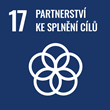Informace o projektu
Zdravotní rizika fytokanabinoidů při subchronické aplikaci
- Kód projektu
- NW24-09-00244
- Období řešení
- 5/2024 - 12/2027
- Investor / Programový rámec / typ projektu
-
Ministerstvo zdravotnictví ČR
- Program na podporu zdravotnického aplikovaného výzkumu na léta 2024 - 2030
- Podprogram 1 - standardní
- Fakulta / Pracoviště MU
- Lékařská fakulta
- Spolupracující organizace
-
Univerzita Palackého v Olomouci
- Odpovědná osoba Doc. RNDr. Jitka Vostálová, Ph.D.
Preparations containing phytocannabinoids (PCBs) are very popular and are widely used orally, dermally or inhaled, mainly for their anti-inflammatory and analgesic effects. Most users consider non-psychotropic PCBs to be free of health risks. Commercial or home-made preparations, using extracts (EXs) from Cannabis sativa as PCB source, differ in the composition of specific PCBs, their ratio and quantity. During long-term use, consumers are exposed to varying, often undefined PCBs doses. Commercial preparations use EXs rich in either cannabidiol (CBD) or cannabigerol (CBG). Home-made preparations may also contain a low, undefined amount of the psychotropic tetrahydrocannabinol (THC). Recently, the safety of non-psychotropic PCBs has been intensively debated. The European Food Safety Authority has ordered a thorough investigation of the safety risks of PCB consumption for human health (e.g. effect on the liver, GIT, endocrine and nervous system or psychological functions). The Czech Agricultural and Food Inspection Authority is preparing a legislative measure that should lead to a ban on the use of CBD and other PCBs from C. sativa in dietary supplements or foods. Our results showed different effect of CBG and CBD on the signalling pathway controlled by the transcription factor Nrf2 and expression of structural proteins in ex vivo skin, which can significantly affect the skin properties. After oral administration to rats, CBD and CBG were also found in the skin, and unlike CBD, CBG induced hepatotoxicity. The aim of the project is to study the safety of C. sativa EXs rich in CBD and CBG and an EX containing also a low THC content during sub-chronic oral and topical application, focusing on their effect on skin structure, the signalling pathway controlled by Nrf2, the overall health of the animals, selected organs and the behaviour of the animals. Primary human skin cells, ex vivo human skin and Balb/C and SKH1 mice will be used for the experiments.
Cíle udržitelného rozvoje
Masarykova univerzita se hlásí k cílům udržitelného rozvoje OSN, jejichž záměrem je do roku 2030 zlepšit podmínky a kvalitu života na naší planetě.
Publikace
Počet publikací: 1
2025
-
Safety assessment on CBD-rich hemp extract in sub-chronic cross-sex study with rats
Toxicology and applied pharmacology, rok: 2025, ročník: 495, vydání: February 2025, DOI


